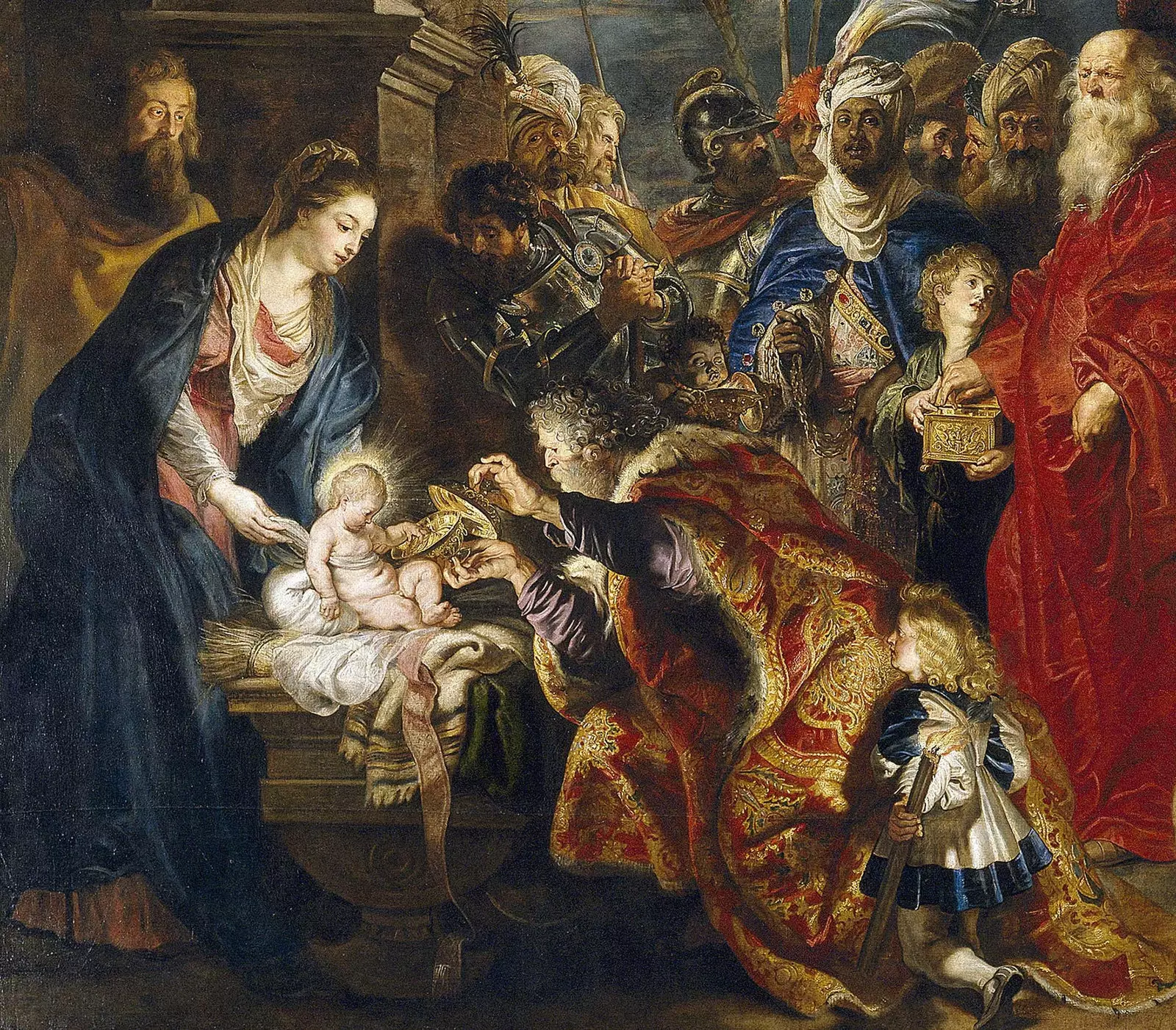
Detail from 'The Adoration of the Magi'
As if they were windows open to Christmas, we reviewed some pictorial works that show us different visions about this Christian festival.
The birth of baby jesus It is one of the most remembered and celebrated events throughout history, at least for almost 2017 years. In fact, the term 'Christmas' comes from the Latin 'Nativitas', which means 'birth'.
Although the Bible does not specify a date or time of Jesus' birth, the official establishment of December 25 as 'Christmas day' occurred in the fourth century, coinciding with the pagan celebration of the day of the Undefeated Sun . In this party the rebirth of the Sun was celebrated, in the winter solstice, so from then on, the king star will do nothing but grow and the light begins to overcome the darkness.
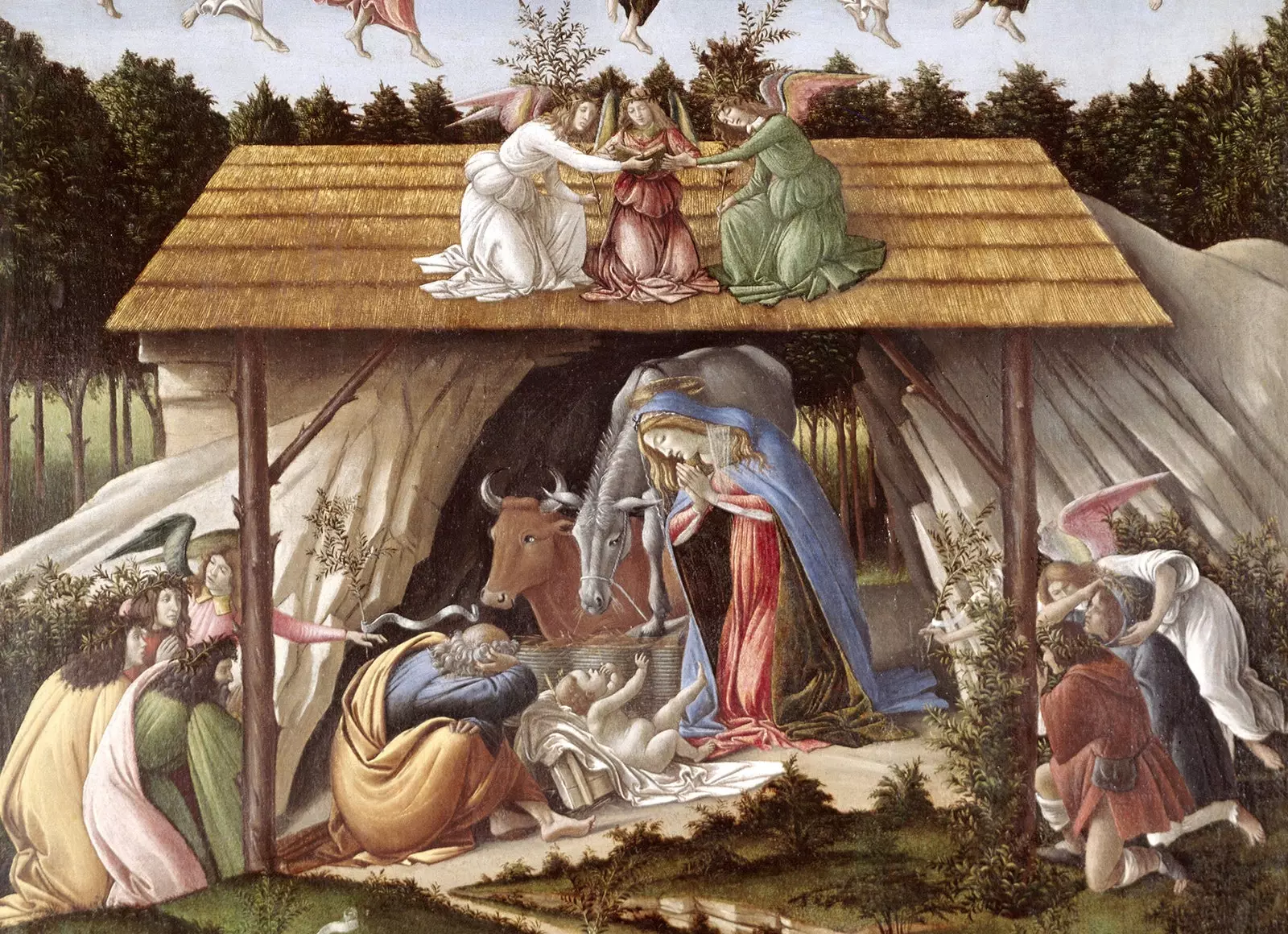
Detail of 'Natività Mistica'
In one of his cármenes, the poet Catullus described this celebration, marked by banquets, costumes and gifts, as “the best of days”.
Nothing could be easier for Christianity, when it began to gain popularity among the Romans, than collect the pagan celebrations and convert them into other Christian ones.
Since then, and to date, it is one of the most universal and influential festivities of the calendar.
The Christmas theme has marked our lives so much that, how could it be otherwise, the pictorial arts have echoed it over the centuries. The story of the Nativity has inspired some of the most luminous, affectionate and gentle representations of the history of art.
Although they may seem somewhat predictable, festive paintings have a great deal of melancholy for some and happy for others. After all, that is what makes art special: each painter has interpreted that miraculous moment from his talents artistic, his own religiosity and a style focused on the time in which he lived.
And, now that we walk into the last days of the year with gingerbread cookies crunching in our mouths and tambourines clanging, now that winter is here and the Sun begins its rebirth, now that the Three Wise Men have begun their journey following the Star of Bethlehem, we look at the work of various artists who have seen, from their different perspectives, the details of the most important event in Christianity.
**THE ANNUNCIATION, FRA ANGELICO (Quattrocento, 1435 - 1445) **
Guido di Pietro da Mugello , better known as Fra Angelico, was an Italian artist, considered pious due to his way of life and his pictorial style. he was a painter Florentine and Renaissance ; therefore, a painter of beauty, but also very religious. He was one of the protagonists of the transition from gothic to renaissance art Therefore, in his works you can see both styles.
He is known, above all, for his representations of the annunciation , like this one that is considered his first masterpiece. In this delicate panel, it can be seen how the Virgin Mary appears humble and submissive, in a gesture of slight awe and greeting before the appearance of the Archangel Gabriel, who announces her transcendent destiny.
The Virgin is the new source of Grace who, through the incarnation, redeems humanity. Hence, on the left side of the painting, this scene faces that of Adam and Eve. It is a resource that the artist uses to symbolize the original sin committed by the first two inhabitants of Paradise, and their redemption on earth which is the materialization of Christ in Mary.
The precision of the detail makes us think of a real goldsmith who , as a good Renaissance man, attaches great importance to the prospects , so in the image you can see an immensity of planes.
Faces with childish and angelic aspects and a harmony between elegant colors , like the gold that expresses the miracle that is happening and the blues and greens that humanize this scene. All this within the framework of a refined, princely room touched by the divinity, the only feasible one for the mystery of the Conception.
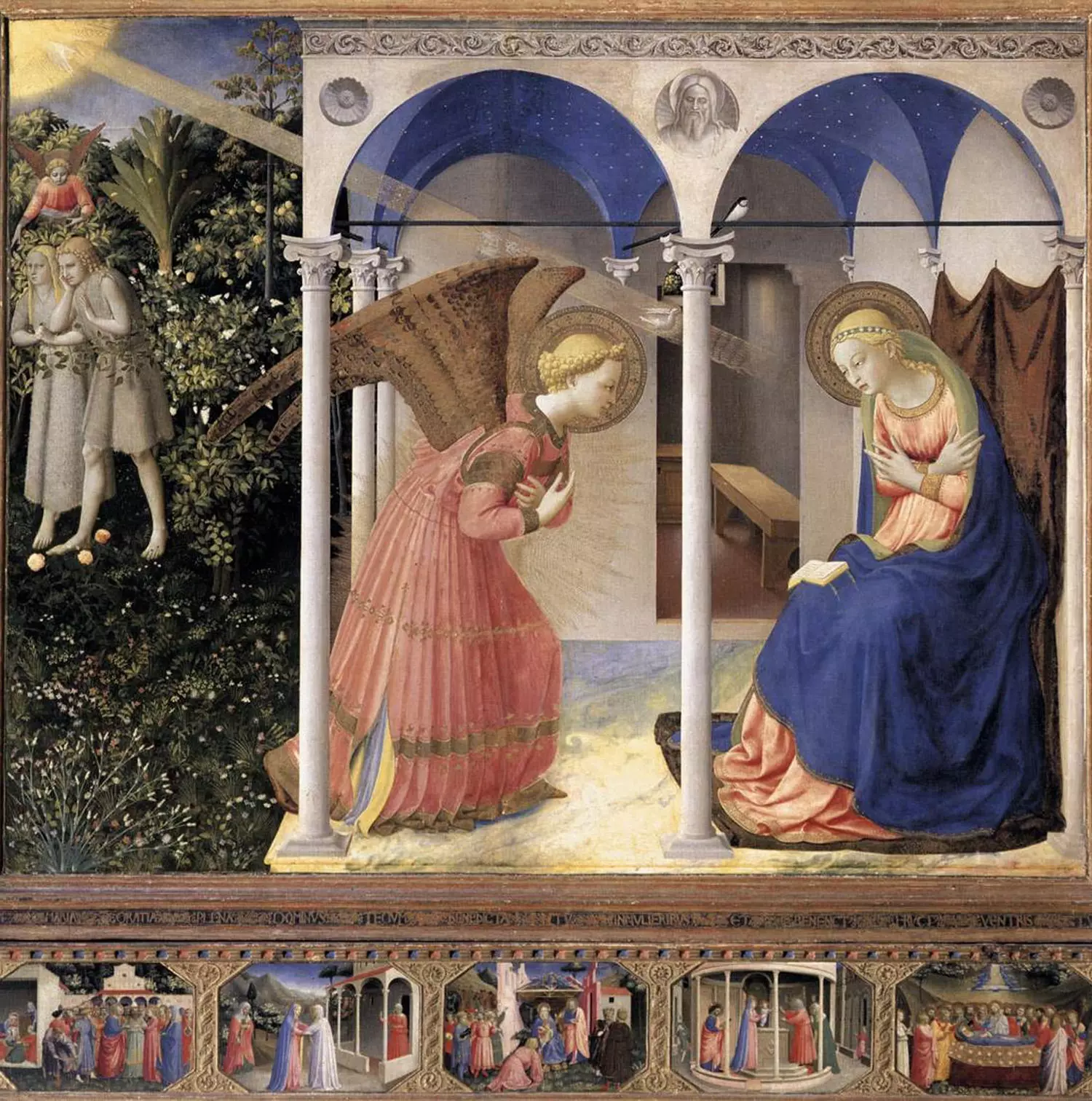
'The Annunciation'
** MADONNA DEL PARTO , PIERO DELLA FRANCESCA (Italian Renaissance, 1460) **
This fresco, created by Piero della Francesca, is one of the masterpieces of the Italian Renaissance and the only painting from that century depicting the pregnant Virgin.
The painting, which announces Christmas, is a homage that the author paid to his own mother. In it, it can be seen, perfectly, that one of the main painter's obsessions was symmetry , for which he duplicated some figures shamelessly, as can be seen in the angels opening the curtains.
In its center, the Virgin, in a state of good hope, takes her right hand to her prominent belly, while she rests her left hand on her hip. The image shows us Mary as a living tabernacle and, as detailed in the book of Exodus, it would be the new Ark of the Covenant, whose treasure is Jesus, whom she carries inside her.
The work is considered unique in Italian painting and it was made for a small Marian sanctuary that ended up joining, later, the Monterchi cemetery.
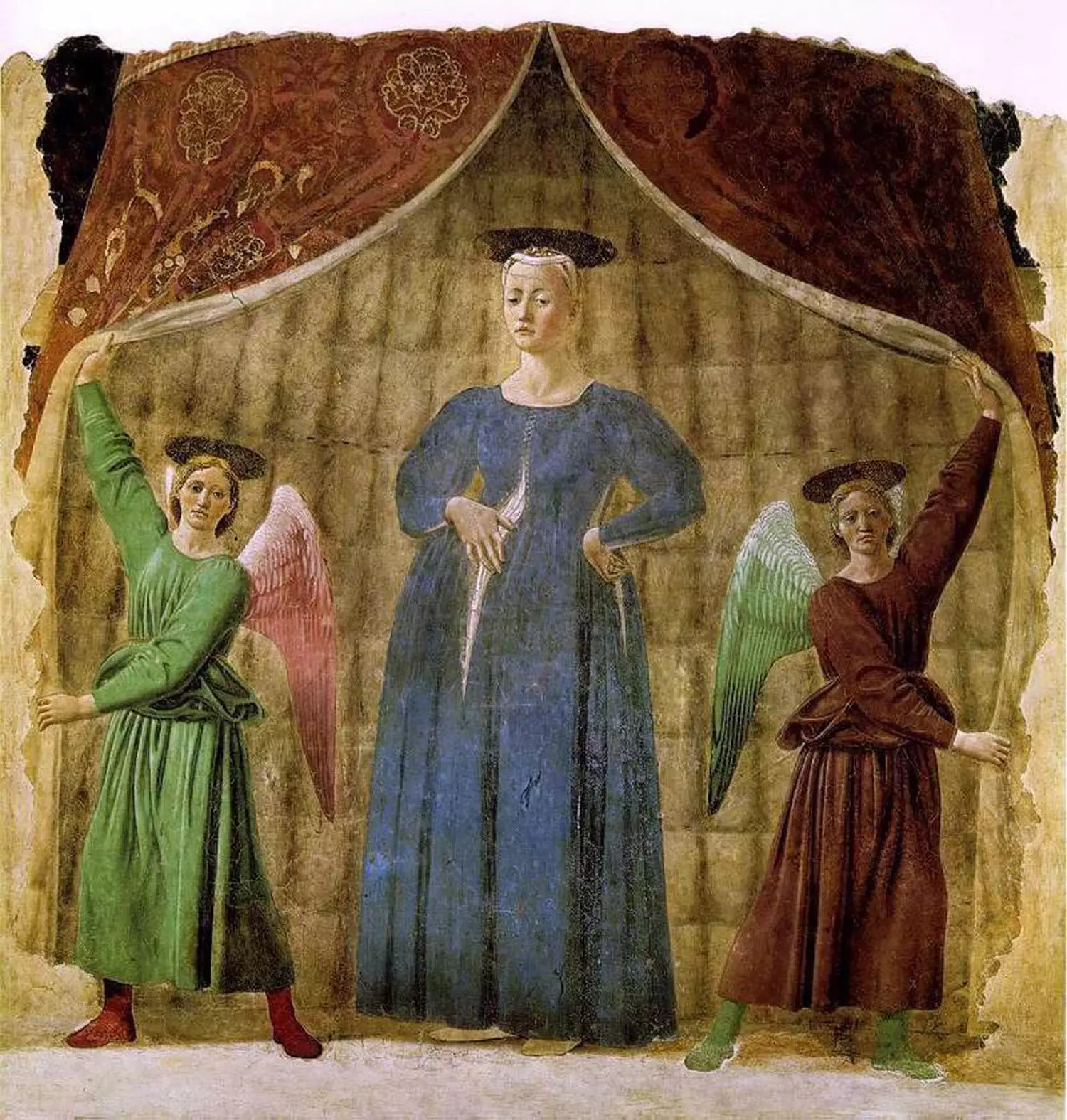
madonna of childbirth
**NATIVITÀ MISTICA, SANDRO BOTTICELLI (Italian Renaissance, 1501) **
Alessandro di Mariano di Vanni Filipepi, popularly known as Sandro Botticelli, is considered by some historians to be a visionary whose work always makes those who look at it think. Youth, love and the allegorical disguise of ancient mythology are the themes that inspire his most famous works.
Curiously, here the Renaissance abandons the realism and perspective characteristic of the Quattrocento and he returns to a more archaic iconography. It is believed that this unusual and mystical vision of the Nativity he must have created it for himself, since the work moves away from the traditional iconographic representations of the biblical moment.
A scene full of mysteries. figures of various sizes , in which the Virgin is represented almost gigantic, and the unnatural attitudes of Saint Joseph and the shepherds take us back to medieval paintings.
The picture, more than joy and jubilation for the arrival of the Son of God, it oozes pathos, it almost looks like an apocalyptic scene of lysergic delirium. Below, angels and humans embrace almost violently, while all Creation worships the Redeemer in a small cave in the center of the scene. Above, a group of angels hold olive branches and dance under a golden sky. Meanwhile, little gray demons try to flee or hide from the advent of the Kingdom of Heaven through small holes in the ground.
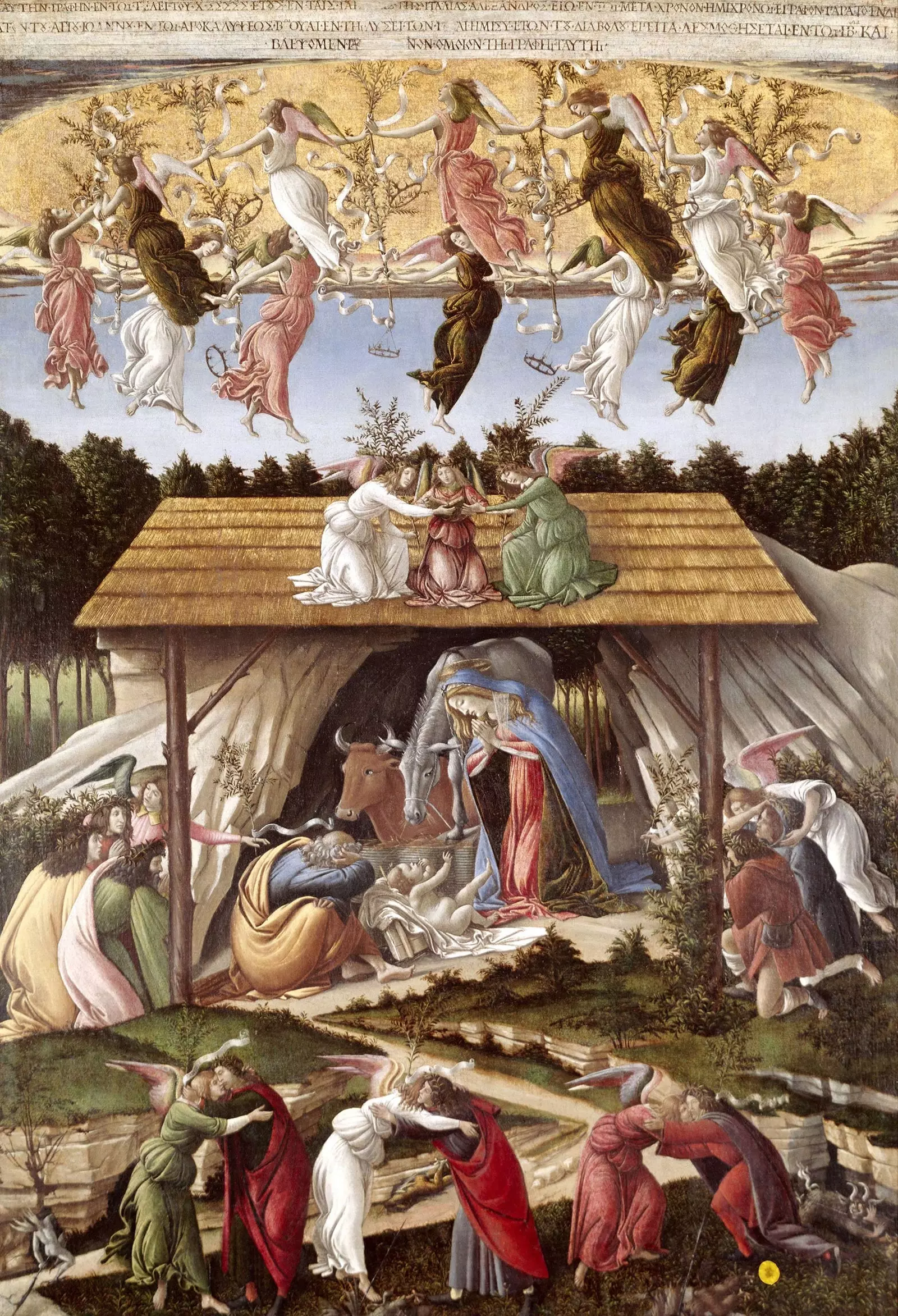
Mystical Nativity
** THE ADORATION OF THE MAGI , PIETER PAUL RUBENS (Baroque, 1608-1629) **
According to the Gospel of Saint Matthew, when Jesus was born, some wise men came to Bethlehem following a star to pay homage to the new king, whose mission was to change the religious life of millions of people. However, it is not described the exact number, or their names, or races, or ages. At least not in the canonical gospels, since the development of its legend is apocryphal and comes from Eastern lands.
Although there are versions that collect that there were between two and sixty magicians, it was not until the third century that it was indicated that the Magi were three , and thus this number ended up being imposed on Western Christianity.
The Adoration of the Magi that Rubens imagined represents an archetype of baroque with its classic play of light and shadow. The Child is the focus from which the light departs, illuminating the faces of the Magi and of all those present who observe him carefully and peacefully.
The use of chiaroscuro It was a very used and successful technique to show, through painting, the to 'good news' , as defined by the biblical story: an episode that came as a brilliant light that emerged from the newborn and that illuminated the world that was plunged into darkness.
The painting was executed at two different times. The first, the part concerning Adoration was carried out between 1608 and 1609 ; the second, corresponding to the right and upper part, was enlarged between 1628 and 1629.
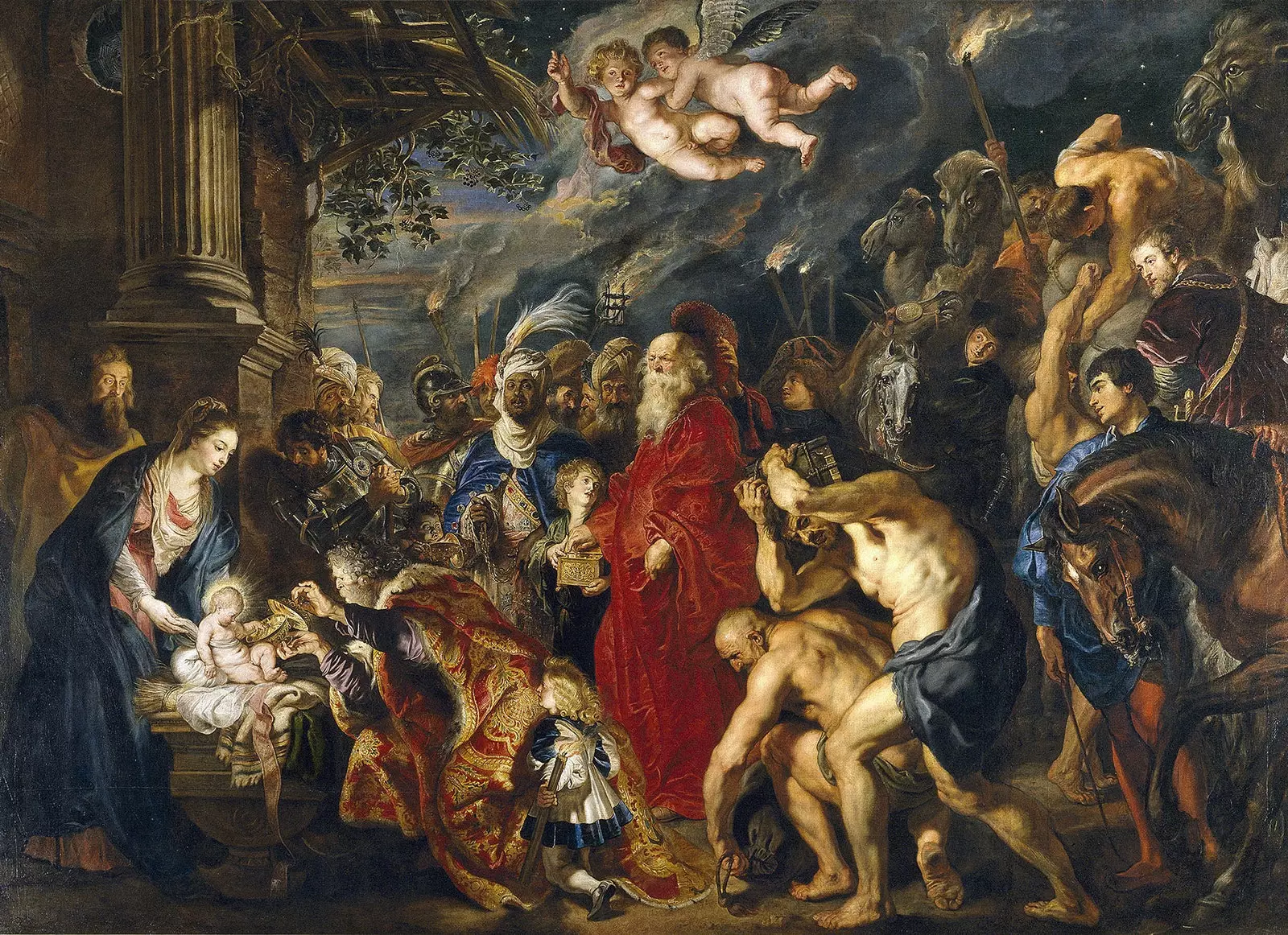
'The Adoration of the Magi'
